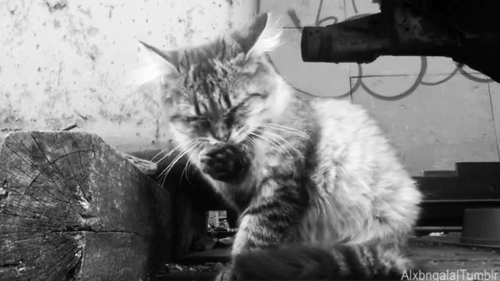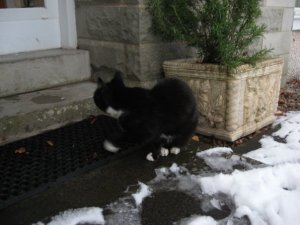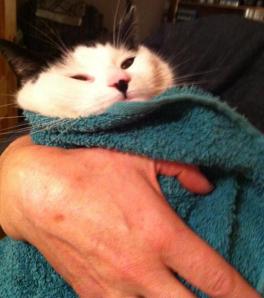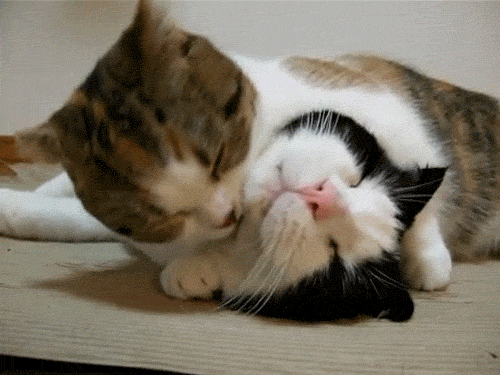Lately I’ve had a song from the TV series ‘Nashville’ stuck in my head – titled I Just Can’t Get it Right.
Copenhagen Zoo was back in the news last week for another culling. The Guardian and the Independent report on the story.
What’s happened this time?
Copenhagen Zoo is receiving a new male lion.
That seems cool, so why are they back in the news? Are they feeding more giraffes to the lions?
Um. No. They’ve euthanised two older lions and two younger lions to make room for him.
You’re kidding.
Well the zoo have helpfully said they’re not going to have live dissections of these lions, because they don’t always publicly dissect animals.
Seriously though, the Guardian reports that the zoo’s scientific director received death threats after the Marius story went viral. I wonder how hard the journalists had to search for the next story, and how the scientific director is feeling this week.
There is a solid, scientific motive behind this culling, and it’s much the same as it was last time around. The zoo highly prizes natural behaviours.
In the wild, lions live in harem structures called prides. We’ve all seen the Lion King. Typically one or two related males will guard a group of females (the females tend to be related to one another, mothers, daughters, sisters). When the cubs are born the pride takes care of them. When the male cubs mature they’re chased from the pride.
Two brothers might then wander the Savannah until they find a pride with an old male lion guarding it. With all the strength and vigour of youth they oust the old lion and set up their own pride. The quickest way to do this is for them to kill all the cubs and bring the lionesses back into oestrus. This means the lionesses waste no time on producing cubs that related to the male protecting their pride. And so the circle of life continues.
Copenhagen Zoo euthanised their two old lions and their two cubs because this would mimic what happens in the wild.
I spoke about Copenhagen Zoo during the Marius scandal and I mentioned that I don’t entirely agree with this ‘natural behaviour’ approach. Let me explain again:
Natural behaviours are a good thing – one of the Five Freedoms relates to the Freedom to Perform Natural Behaviours.
But natural behaviours do not show an ethical standpoint. Aggression is natural. Dying is natural. Stress is natural. When using this freedom to assess the welfare of captive animals, we mean that the animal’s behavioural repertoire, all the behaviours it is capable of performing, should not be artificially restricted. For example, keeping a pig in a farrowing crate that prevents her from turning over is severely restricting her natural mothering behaviours.
This new male who is coming to Copenhagen Zoo does not have to fight the two old males for his pride. In the wild, he can’t simply come in and have the humans do all the work for him. Vice versa, the two old males who have been euthanised have not had the chance to fight for their survival. They did not have the opportunity to display their aggression to newcomer males.
It’s obvious why the zoo did not allow these natural behaviours to occur. A fight between three male lions would have caused great suffering to the animals. The aggression and the fight would have induced pain and stress and resulted, most likely, in a slow death for the losing animals. The zoo has accepted it has a duty of care over the animals, and so will not allow the fight to occur.
The zoo inherently compromises its natural behaviour ethos by selecting what animals live and die.
The moment you take responsibility for the life and death of an animal, you have a duty to make sure it has a good life and dies well.
Now I want to emphasise that I do not have a problem with animal euthanasia. It’s a ‘good’ death. I use animal products every day, therefore I cannot be opposed to the ending of a healthy animal’s life for human benefit. I have a problem with how the zoo chooses to justify this euthanasia. I think the zoo is trying to wear two hats at once, and it’s not an attractive look.
If the zoo’s primary focus is conservation, it should act as a rehabilitation centre. The public are not allowed in. You don’t overstock on animals which are not going to contribute to the conservation effort. You don’t stock many high profile, popular species like lions and giraffes. You have pens which are designed wholly for natural behaviours, not for viewing purposes.
If the zoo is a business which seeks to educate and inspire people about animals, it must accept that the very practice of keeping animals for this purpose innately compromises natural behaviours. The animals are not being kept for their good but for ours, and therefore we owe them a very good life indeed.
The zoo would probably respond that it is both of these scenarios. That is would be impossible to work in conservation without the money-making business side of the enterprise. I don’t really agree.
Many of the pictures used on this blog are ones I’ve taken at Edinburgh Zoo. I use that zoo for teaching. I use that zoo for entertainment. I think it’s a good zoo. But it is still a zoo and I still accept, every time I cross those gates, that my demand to use these animals compromises their welfare.
It’s a relatively small compromise. Probably better than the welfare compromise I ask of the chickens I eat. But it still exists.
Cull the surplus, it’s better than a slow death. But don’t try to fool yourself into thinking its for any other reason than because they’re no longer satisfying a human need.



